Chatbots can answer questions anytime, but are they helpful? This guide shows how businesses are using chatbots to create 24/7 customer support.
Chatbots work by understanding language, so customers get quick responses in their own words. They learn from conversations to improve. Businesses like this because chatbots don't get tired or take breaks.
But are chatbots smart enough for complex problems? We'll look at how companies develop chatbots using real customer data and feedback. Chatbots need ongoing updates so customers always get the best experience.
We'll also cover balancing automation with human support. Chatbots are great for common issues but real agents help with complicated questions.
Working together creates a seamless process whether customers want a quick answer or a person to talk to.
This guide helps you decide if a chatbot makes sense for your business. It also provides best practices for creating a helpful, harmless, and honest virtual assistant that improves over time based on what customers really need.
So without waiting anymore, let us start with a customer service chatbot.
Customer Service Chatbot: What is it?
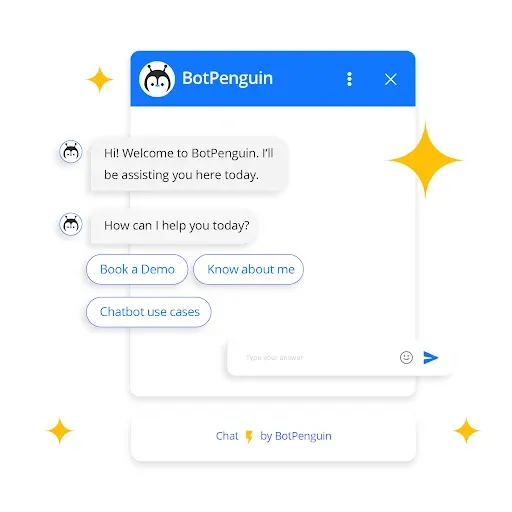
As a name, it is clear, a chatbot that is designed to provide customer support and assistance.
When a customer interacts with a chatbot, the chatbot interprets the message, identifies the customer's intent, and provides relevant responses.
Customers can ask basic questions or seek help with more complex issues, and the chatbot can handle the conversation from start to finish.
How Do Customer Service Chatbots Work?
Customer service chatbots use natural language processing (NLP) and machine learning algorithms to understand and interpret human text inputs.
They also rely on databases, APIs, and pre-defined scripts to provide relevant and accurate responses to customer queries.
Benefits of Customer Service Chatbots

Improved response time: One of the most significant benefits of chatbots is their ability to provide immediate responses to customer queries.
Chatbots are available 24/7 and can handle multiple conversations simultaneously, eliminating the need for customers to wait for a human agent.
24/7 availability: They can work around the clock without needing breaks or time off. This means that customers can seek help and support at any time of the day or night.
Cost savings: Chatbots are a cost-effective way to provide customer support since they don't need to be paid hourly wages like human agents.
This results in significant savings for businesses.
We have covered very basic things about customer service chatbots, and now we will move on to how to implement a customer service chatbot.
Implementing a Customer Service Chatbot
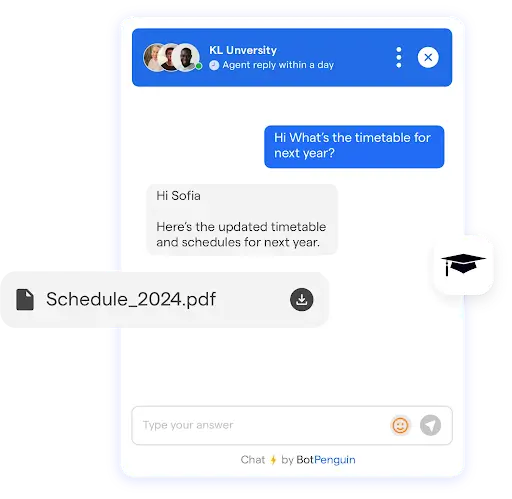
Implementing a customer service chatbot can greatly improve your customer support capabilities.
However, it's important to approach the implementation process strategically to ensure the chatbot meets your specific needs.
In this section, we will discuss the steps to successfully implement a customer service chatbot, including assessing your customer service needs, choosing the right chatbot platform, and designing the chatbot conversation flow.
Assessing your Customer Service Needs
Assessing your customer service needs is the first step in implementing a customer service chatbot.
Take the time to analyze and understand your customers' common queries, issues, and problems.
This will help you identify the types of queries the chatbot should be able to handle and the level of complexity it needs to handle.
Mapping Customer Journeys
To effectively assess your customer service needs, map out the customer journey, and identify the touchpoints that a chatbot can handle.
Consider the different stages of the customer journey, from initial inquiry to post-purchase support.
This will allow you to identify opportunities where the chatbot can provide assistance and streamline customer interactions.
Choosing the Right Chatbot Platform
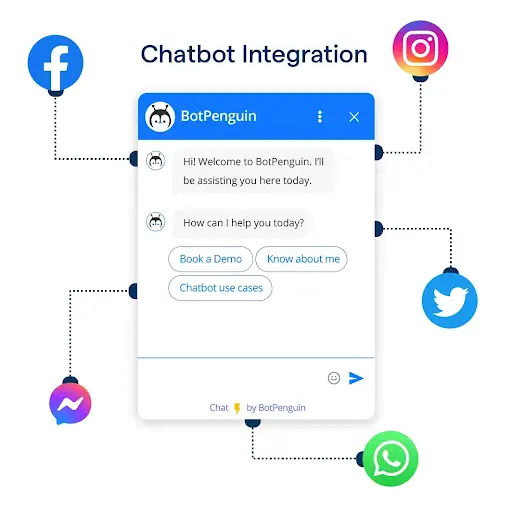
Choosing the right chatbot platform plays a crucial role in the success of your customer service chatbot implementation.
Consider the following factors when selecting a chatbot platform:
Integration Capabilities: Ensure that the chatbot platform can integrate seamlessly with your existing systems, such as customer relationship management (CRM) software or e-commerce platforms.
This will enable the chatbot to access relevant customer information and provide personalized support.
Natural Language Processing (NLP) Capabilities: Look for a chatbot platform that has advanced NLP capabilities. This will allow the chatbot to understand and interpret customer messages accurately, even if they are phrased in different ways or contain grammatical errors.
Customization Options: Choose a chatbot platform that offers customization options, such as the ability to customize the chatbot's appearance, language, and tone.
This will enable you to align the chatbot with your brand identity and provide a consistent customer experience.
Botpenguin is the ideal chatbot platform for seamless 60+ integration, advanced NLP, and customization.
We ensure smooth system connections and personalized support via CRM access. Botpenguin understands varied customer messages through powerful language processing.
Customize the bot's look, language, and tone to align with your brand for consistently excellent service.
Designing the Chatbot Conversation Flow

Designing the conversation flow is the second most important step in implementing a customer service chatbot.
A well-designed conversation flow ensures a smooth and intuitive user experience while effectively addressing customer queries and needs.
Defining User Intents and Responses
Identify the different intents or purposes that users may have when interacting with the chatbot.
Examples of user intents could include asking a product-related question, requesting a refund, or seeking technical support.
For each intent, define the appropriate responses that the chatbot should provide to address the user's needs.
Creating a Conversational and Intuitive Interface
Design the chatbot interface to be conversational and intuitive. Use simple and clear language, avoid jargon, and break down complex information into digestible chunks.
Consider incorporating buttons or quick replies to provide users with predefined options that can guide them through the conversation flow.
When you design your chatbot, the next step will be training your chatbot let us see how to train your chatbot for customer service.
Suggested Reading:
What Problems Can a Customer Support Chatbot?
Training the Chatbot
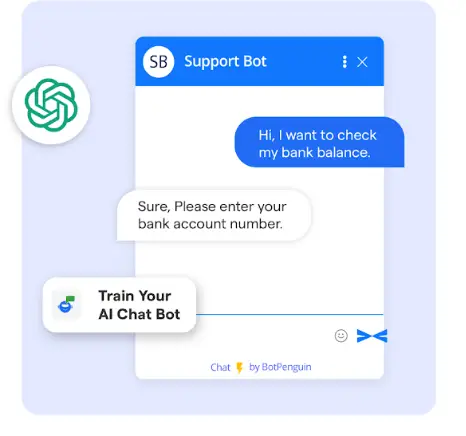
Training your chatbot is essential to ensure it can effectively handle customer queries and provide accurate responses.
By following a structured training process, you can enhance the chatbot's performance and improve customer satisfaction.
Gathering Data for Training
To train the chatbot, you need relevant data that represents the kinds of queries and interactions it will encounter.
Gather past customer interactions, support tickets, and frequently asked questions (FAQs) to create a training dataset.
This data will serve as the foundation for the chatbot's knowledge base.
Cleaning and Organizing the Data
Clean and organize the collected data, eliminating duplicates and irrelevant information.
Categorize the data based on common themes or intents. This will make it easier to create training examples and establish patterns for the chatbot to understand customer queries.
Creating Training Examples
Using the organized data, create training examples that cover a wide range of customer queries and intents.
Write down these examples in a natural language format, reflecting how customers would typically ask questions.
Ensure that the examples encompass the various ways customers could phrase similar queries.
Annotating Training Examples
Annotate each training example with the correct intent or response. This step is crucial for the chatbot to understand the context and provide accurate replies.
Review and double-check the annotations to ensure they align with your intended responses.
Training the Chatbot Model
Now that you have a comprehensive dataset with annotated training examples, it's time to train the chatbot model.
Use a machine learning or natural language processing framework to train the model based on the dataset.
The model will learn from the patterns in the training examples and use this knowledge to respond to new customer queries.
Evaluating Model Performance
After training the model, evaluate its performance to measure its accuracy and effectiveness. Use test data or a separate validation dataset to simulate real-world interactions.
Assess the chatbot's ability to understand queries, respond appropriately, and handle different scenarios.
We have covered the training step, but training is not a one-time task you must update your bot from time to time, worried to know how?
In the next section, we are going to cover how continuous improvement of the chatbot is done.
Suggested Reading:
8 Secret Techniques to Improve Customer Service Chatbot
Continuous Improvement of the Chatbot
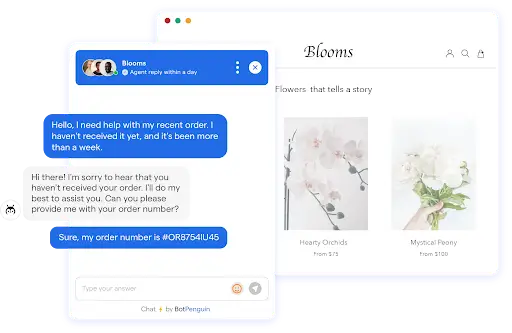
Training the chatbot is not a one-time task—it requires continuous improvement to stay relevant and provide the best possible customer experience.
By collecting user feedback, analyzing chatbot metrics, and implementing enhancements, you can refine your chatbot over time.
Collecting User Feedback
Encourage users to provide feedback on the chatbot's performance. This feedback can come from direct user interactions or through post-interaction surveys.
Analyze the feedback to identify areas where the chatbot can be improved and to gain insights into user expectations and preferences.
Analyzing Chatbot Metrics
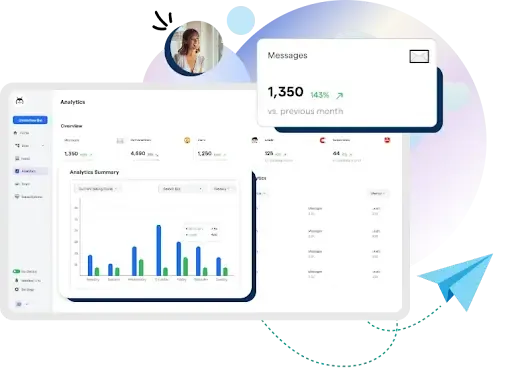
Use chatbot metrics to gain a deeper understanding of its performance.
Analyze metrics such as response accuracy, response time, user satisfaction ratings, and the number of conversations resolved without the need for human intervention.
Identify trends and patterns to pinpoint areas for improvement.
Implementing Enhancements
Based on user feedback and chatbot metrics analysis, implement enhancements to address any identified shortcomings.
This could involve adding new training examples, refining response templates, tweaking the chatbot's language model, or integrating it with additional data sources.
Regularly review and update the chatbot to keep up with evolving customer needs.
In the next section, we will explore best practices for customer service chatbots.
Best Practices for Customer Service Chatbots
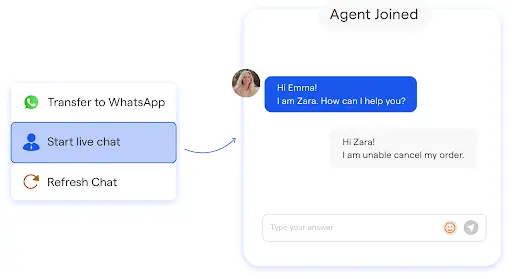
There are three key areas to consider when implementing customer service chatbots: personalization and customization, balancing automation and human interaction, and maintaining a consistent brand voice.
Let us see one by one…
Personalization and Customization
One of the crucial factors in ensuring customer satisfaction with chatbots is personalization and customization. Customers expect interactions that cater to their specific needs and preferences.
By personalizing the chatbot experience, you can create a more engaging and effective customer service solution.
Understanding customer preferences: To provide a personalized experience, it is essential to gather information about your customers.
Simple questions at the beginning of the conversation can help you understand their requirements. Use this information to tailor responses and recommendations accordingly.
Adaptive conversation flows: A chatbot should be able to adapt its conversation flow based on the customer's responses.
By integrating intelligent algorithms, chatbots can dynamically adjust their interactions to meet individual needs, ensuring a seamless and personalized experience.
Contextual understanding: To enhance personalization, chatbots should have the ability to retain and recall previous conversations.
This contextual understanding allows the chatbot to pick up where the conversation left off, eliminating the need for customers to repeat themselves.
It demonstrates that you value their time and fosters a sense of continuity in the customer experience.
Balancing Automation and Human Interaction
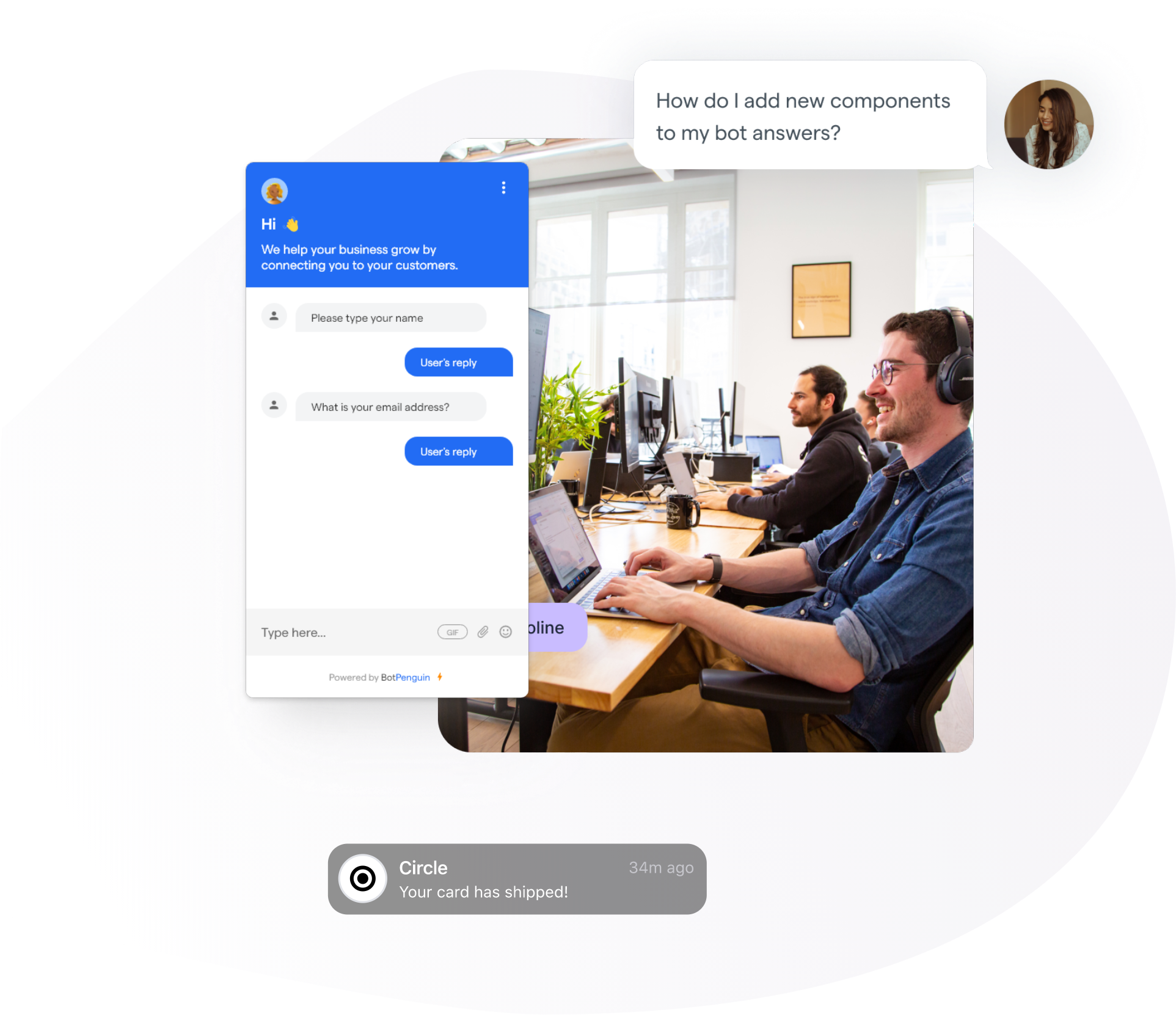
While chatbots offer automation and efficiency, it is important to find the right balance between automation and human interaction. Incorporating both elements can provide the best customer service experience.
Identifying appropriate scenarios for automation: Chatbots are well-suited for handling repetitive and mundane tasks.
Identify areas where automation can streamline processes, such as providing basic information, FAQs, or order tracking. This frees up human agents to focus on more complex customer inquiries.
Seamless handoff to human agents: For situations beyond the capabilities of chatbots, it is important to seamlessly transition the conversation to a human agent.
Implementing smooth handoff protocols ensures that customers receive timely assistance when needed. Develop clear guidelines for when to involve a human agent, ensuring a consistent and efficient customer experience.
Training customer service agents: For effective collaboration between chatbots and human agents, it is essential to provide thorough training to your customer service team.
Agents should understand the capabilities and limitations of chatbots, enabling them to supplement the technology and provide personalized support when required.
Maintaining a Consistent Brand Voice
Consistency in your chatbot's interactions is key to reinforcing your brand image and fostering customer trust. Your chatbot should reflect your brand's tone, personality, and values.
Defining your brand voice: Before implementing a Customer Service bot, clearly define your brand's voice. Consider your target audience, brand values, and positioning.
Whether your brand voice is friendly, professional, or casual, make sure your chatbot's responses align with this voice consistently.
Regular reviews and updates: To ensure the chatbot's responses remain aligned with your brand, regularly review and update its conversational scripts.
This includes refining the tone, incorporating any changes in messaging guidelines, and staying up-to-date with industry trends and customer preferences.
Continuous learning and improvement: Customer Service bots can learn from customer interactions and feedback.
Monitor and analyze conversations to identify areas for improvement. By continuously refining and enhancing the chatbot's responses, you can provide an even better customer experience over time.
Now in the next section, we will cover some challenges with customer service chatbots.
Overcoming Challenges with Customer Service Chatbots
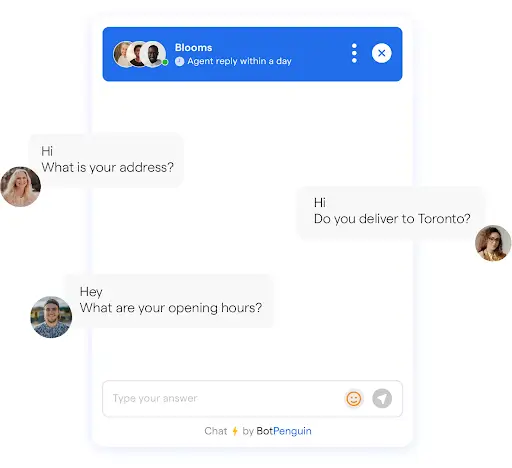
Implementing customer service chatbots can greatly enhance the efficiency and effectiveness of your customer support.
However, it's important to address and overcome certain challenges that may arise when using chatbots.
In this section, we will explore three key challenges businesses face when using customer service bot: dealing with complex queries, avoiding misinterpretation and misunderstandings, and addressing privacy and data security concerns.
Dealing with Complex Queries
The first challenge is dealing with complex queries that require a deeper understanding.
To overcome this, businesses must continuously improve the chatbot's natural language processing capabilities through advanced machine learning and natural language understanding techniques.
Chatbots also need fallback options to redirect customers to human agents or self-service resources when they cannot sufficiently address complex issues.
Avoiding Misinterpretations and Misunderstandings
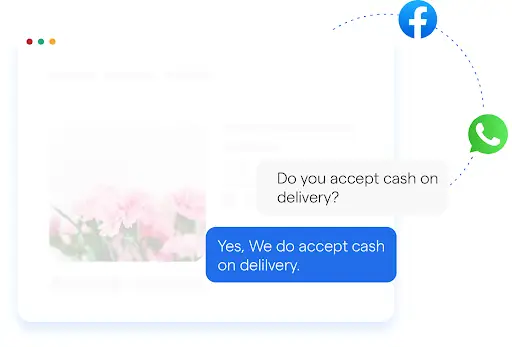
Another challenge is avoiding misinterpretations and misunderstandings that can lead to frustrating customer experiences.
Customer Service bots can use clarifying questions to seek additional context when queries are unclear in order to provide more accurate responses.
Incorporating sentiment analysis allows chatbots to recognize the emotional context behind queries and respond empathetically.
Suggested Reading:
The Future of Customer Service: Customer Support Chatbots
Addressing Privacy and Data Security Concerns
The final, important challenge is addressing privacy and data security concerns to build customer trust.
Businesses must implement robust encryption protocols to securely store and transmit customer data according to industry standards. They also need to be transparent about data collection and usage through clear privacy policies that gain customers' consent.
Additionally, conducting regular security audits and monitoring helps ensure the ongoing protection of customer information and detect any suspicious activities.
We at BotPenguin Offer Customer Service Chatbot
BotPenguin offers a powerful chatbot for customer service that streamlines query resolution.
Our chatbot can understand questions in natural language and hold conversations to answer inquiries.
It has over 60+ integrations that allow access to additional data sources.
The chatbot provides a smooth experience for customers.
We use advanced natural language processing to understand questions.
Customers can get timely responses without waiting for an agent.
It can ask follow-up questions, clarify misunderstandings, and continue dialogue until the customer's needs are met.
BotPenguin's chatbot offers rich media options to make interactions more engaging. Customers can enjoy GIFs, emojis, or images to supplement responses.
Frequently used phrases are saved to eliminate repetition and save time.
The chatbot seamlessly transfers conversations to an agent when needed. This provides the human touch when technical support is required.
The platform allows non-technical users to build custom chatbots without coding. Chatbots are easily deployed on popular messaging apps like Facebook Messenger, Telegram, and WhatsApp for customer convenience.
Businesses gain powerful automation of routine support tasks to free up agents for more complex issues. Customer data and conversations are stored securely.
Connect with us now and see how BotPenguin can help your business provide better customer support. “Schedule a demo today”
Suggested Reading:
12 Successful Customer Service Chatbot Examples
Frequently Asked Questions (FAQs)
How can chatbots be used for customer service?
Chatbots assist in customer service by offering instant responses to inquiries, guiding users through troubleshooting processes, providing information on products/services, and automating routine tasks.
They enhance efficiency by resolving common issues and offering support 24/7.
How to use ChatGPT in customer service?
ChatGPT can be utilized in customer service by integrating it into chatbot frameworks to provide natural and contextually relevant responses to customer queries.
Its AI capabilities help understand and address diverse customer concerns effectively, improving the overall service experience.
How do you scale customer service with chatbots?
Scaling customer service with chatbots involves designing adaptable systems that handle increased query volumes efficiently.
This includes refining chatbot algorithms, incorporating machine learning for improved responses, and integrating with CRM systems for better customer data management.
Why is a chatbot important in customer service?
Chatbots are crucial in customer service for their ability to offer instant support, resolve routine inquiries promptly, provide consistent service across various channels, and free up human agents to handle more complex issues.
They enhance customer satisfaction and streamline service workflows.
How do chatbots contribute to reducing customer service costs?
Customer Service bots reduce costs by automating routine tasks, decreasing the need for human intervention in handling repetitive inquiries, and enabling a higher volume of simultaneous interactions, leading to more efficient resource utilization.

